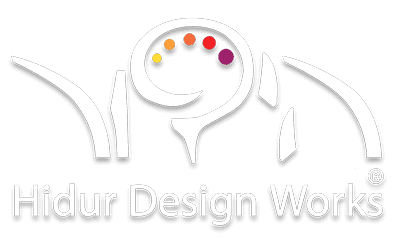the decline of aesthetics
Don’t try to be original, just try to be good.
—Paul Rand (1914–1996)
can art be taught?
I am teaching graphic design now for over 18 years. For me personally, that was always a tremendous enrichment for my own development as an artist and designer, along with an ongoing source of learning about the art and importance of teaching and careful listening. Like all artistic disciplines, it brings along the question to which extent you can teach creativity, art, and design in the first place. Well, from a graphic designer’s point of view, there is always the technical side, meaning the teaching of the programs like Photoshop, InDesign, Illustrator, etc. – or the foundations of programming or the printing industry. Those are clearly measurable building blocks of knowledge, as pressing certain keys on the keyboard will have a visibly measurable result on your computer screen.
But how about the creative artistic side of the profession? Is art measurable? Or is it all nothing but a matter of personal taste? And with these questions, we are entering areas less clearly measurable. What makes Picasso a genius? Why is the Parthenon or Falling Waters a greater piece of architectural art than the rest stop on Highway 60? And why is a poster or logo by Paul Rand better (and a lot more expensive) than Joe Shmoe’s latest Photoshop composite, he proudly uploaded to Facebook just this morning?
To design is much more than simply to assemble, to order, or even to edit: it is to add value and meaning, to illuminate, to simplify, to clarify, to modify, to dignify, to dramatize, to persuade, and perhaps even to amuse. To design is to transform prose into poetry.
—Paul Rand (1914–1996)
being karl marx
Don’t get me wrong, please. I think being creative is an essential human expression, and I encourage everybody to be creative in all its manifold ways. However, I also observe that the tremendous amount of bad design and so-called art along with floods of iPhone selfies on all these social media platforms, resulting in the mentioned problem: a decline in aesthetics, as people do not know anymore, how to distinguish between good and bad. Wrong, bad typography has become the norm to the extent, that for a lot of people, correct typesetting and usage of typography started to look wrong. My heart is bleeding …
the language of art
Form follows function — that has been misunderstood. Form and function should be one, joined in spiritual unity.
—Frank Lloyd Wright (1867–1959)
confusing tool and content
And I think, this is where the confusion gets started these days. In a time and place, when personal computers are found in basically every household, more than half of them loaded with Photoshop or other graphics programs — a time, when digital cameras are part of standard household equipment, and working with them has become as technically simple and easy as never before — people easily confuse tool and aesthetic content.
The tool has become the aesthetic content.
Whether or not somebody speaks the language of art has become irrelevant, if they speak Photoshop. It takes less than a minute to upload the new masterpiece to Facebook, Instagram or Pinterest and start collecting the precious LIKES, that surely must mean, that one did a good job. And it makes the artist hungry for more. I often wonder, if people just want to be nice and friendly, when they hit the LIKE-button – or really like it.
The bigger problem resulting from it, in particular for graphic artists, is that such self-declared designers damage the market. Logos offered for 5 Euros, 5 Dollars or 25 Shekels might sound attractive, but in the end, they also look like 5 Euros, Dollars or Shekels. There are even websites generating logos for free. I once tried it for my company Hidur Design Works. The results were devastating! But how will people know, if they do not know what is a good design and what isn’t?
education! education!
Therefore I keep believing in artistic and aesthetic education as I have done for the past 17 years. Back in the good old days (however far back you wish to go) learning about art and aesthetics was part of the general education of the individual. What I observe today is that this aesthetic compass got lost. And I think more than ever, we need to come back to this form of humanist education.
Good design is making something intelligable and memorable. Great design is making something memorable and meaningful.
—Dieter Rams (*1932)
When we look at the things that have value for us, we can divide them into two larger groups:
1. Objects and things, whose value is defined by function.
2. Objects and things, whose value is defined through aesthetics.
Take a look around your house. You will most certainly find a large number of objects, that you keep in your home solely for the purpose, as looking at them brings you pleasure. A person’s striving for beauty is an inborn human need and desire. It sharpens our senses and sensitivities and awakens us to the beauty of the world we live in.
In a time, when everything and all is possible, we gotta learn more and deeper again about art and aesthetics – to learn to distinguish between the good and the bad, between the ugly and the beautiful – and the beauty in everything. Because I strongly believe, it will help and contribute to making us better human beings.

One thought on “the decline of aesthetics”
I wholeheartedly agree!!! No further comment necessary.